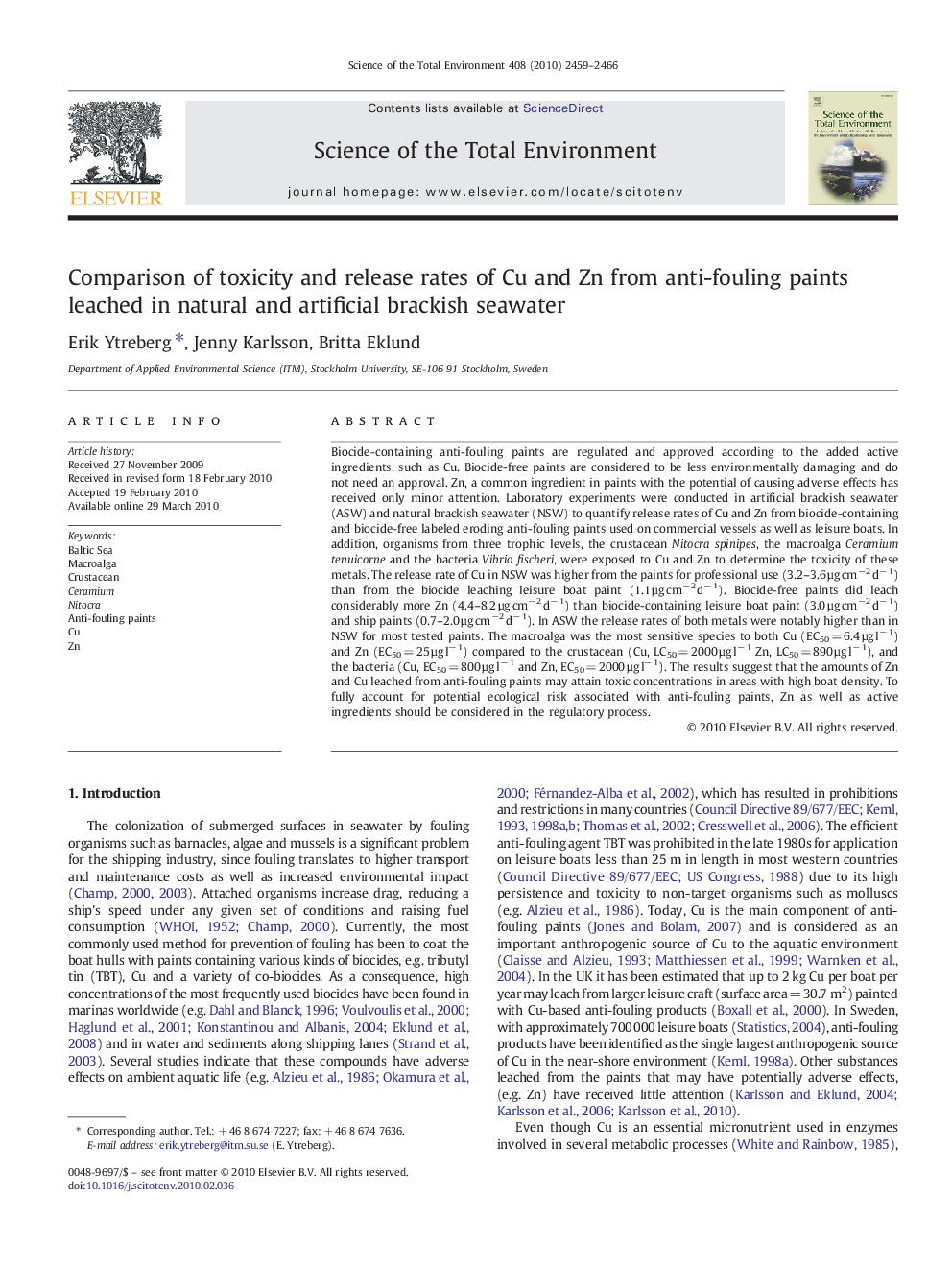| کد مقاله | کد نشریه | سال انتشار | مقاله انگلیسی | نسخه تمام متن |
|---|---|---|---|---|
| 4430755 | 1619874 | 2010 | 8 صفحه PDF | دانلود رایگان |

Biocide-containing anti-fouling paints are regulated and approved according to the added active ingredients, such as Cu. Biocide-free paints are considered to be less environmentally damaging and do not need an approval. Zn, a common ingredient in paints with the potential of causing adverse effects has received only minor attention. Laboratory experiments were conducted in artificial brackish seawater (ASW) and natural brackish seawater (NSW) to quantify release rates of Cu and Zn from biocide-containing and biocide-free labeled eroding anti-fouling paints used on commercial vessels as well as leisure boats. In addition, organisms from three trophic levels, the crustacean Nitocra spinipes, the macroalga Ceramium tenuicorne and the bacteria Vibrio fischeri, were exposed to Cu and Zn to determine the toxicity of these metals. The release rate of Cu in NSW was higher from the paints for professional use (3.2–3.6 µg cm−2 d− 1) than from the biocide leaching leisure boat paint (1.1 µg cm−2 d− 1). Biocide-free paints did leach considerably more Zn (4.4–8.2 µg cm−2 d− 1) than biocide-containing leisure boat paint (3.0 µg cm−2 d− 1) and ship paints (0.7–2.0 µg cm−2 d− 1). In ASW the release rates of both metals were notably higher than in NSW for most tested paints. The macroalga was the most sensitive species to both Cu (EC50 = 6.4 µg l− 1) and Zn (EC50 = 25 µg l− 1) compared to the crustacean (Cu, LC50 = 2000 µg l− 1 Zn, LC50 = 890 µg l− 1), and the bacteria (Cu, EC50 = 800 µg l− 1 and Zn, EC50 = 2000 µg l− 1). The results suggest that the amounts of Zn and Cu leached from anti-fouling paints may attain toxic concentrations in areas with high boat density. To fully account for potential ecological risk associated with anti-fouling paints, Zn as well as active ingredients should be considered in the regulatory process.
Journal: Science of The Total Environment - Volume 408, Issue 12, 15 May 2010, Pages 2459–2466